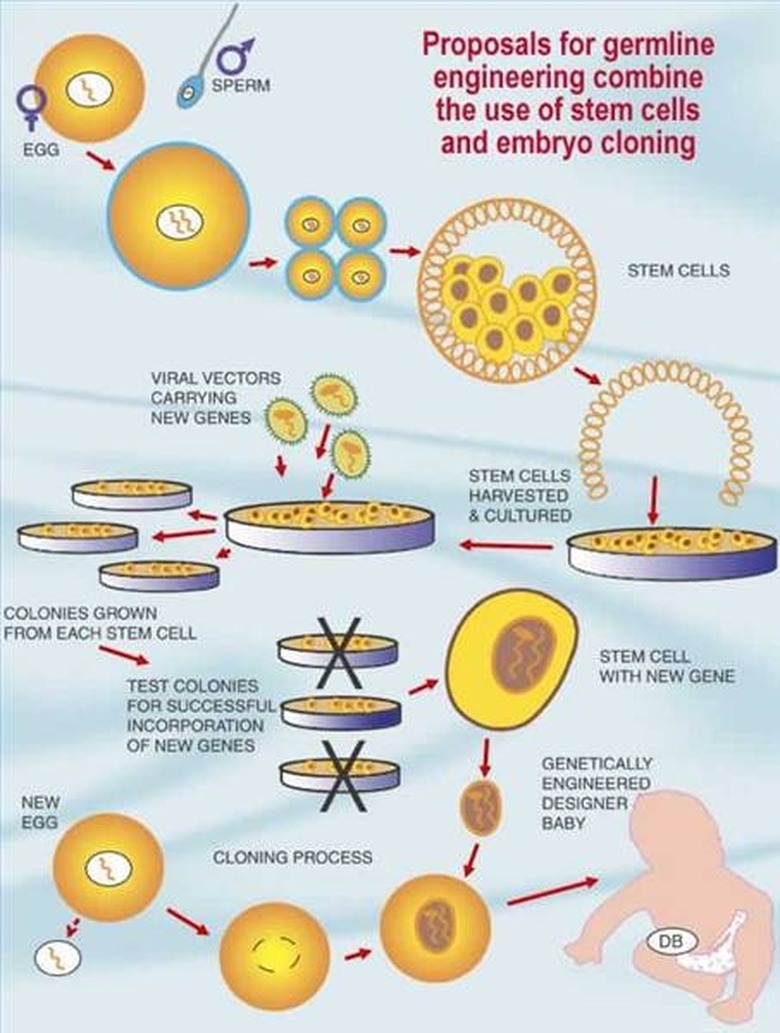What Kinds Of Genes Do Plasmids Have?
A plasmid is a small circular piece of DNA found in bacteria. Plasmids have become useful tools in biotechnology, allowing scientists to combine DNA from different organisms into a continuous piece of DNA. Plasmids replicate by themselves during cell division and are stable over long periods, meaning they are a great vehicle for storing individual genes like books in a library. Plasmids can contain the following types of genes: antibiotic resistance genes, transgenes and reporter genes. These types of plasmid genes may occur naturally or be engineered by scientists.
Antibiotic Resistance Genes
Antibiotic Resistance Genes
Plasmids are one cause of bacteria becoming resistant to antibiotics. Plasmids contain antibiotic resistance genes, which produce proteins that protect the bacteria from harmful drugs. Antibiotic resistance genes can work in several ways. One is by pumping the antibiotic out of the bacteria, so that the antibiotic cannot bind its target protein within the cell. Another is by degrading the antibiotic into small pieces. And another is to by chemically changing the antibiotic so that it no longer interacts with its target protein. Antibiotic resistance genes are also referred to as selectable markers in plasmids, since they allow for bacteria that have resistance to be selected for in a test tube after treatment with an antibiotic.
Transgenes
Transgenes
In biotechnology, plasmids are widely used to isolate a gene from an animal or plant and then place it into bacteria, which makes it easier to modify and study that gene. A segment of DNA that is enzymatically cut out from an organism and placed into a bacterial plasmid is called a transgene. The combination of the transgene and the plasmid is called recombinant DNA, since it is DNA from two different species that are fused together.
Reporter Genes
Reporter Genes
Bacteria can sometimes kick out a plasmid, so scientists who use plasmids to make recombinant DNA often want to include in the plasmid a gene that allows them to visually identify which bacterial colony has bacteria that contain that plasmid. To easily visualize positive colonies — those that have the recombinant DNA — scientists include reporter genes in the plasmid. A common reporter gene is green fluorescent protein (GFP), which glows green under ultraviolet light. Another common reporter gene is lacZ, which codes for an enzyme called beta-galactosidase (beta-gal). Beta-gal breaks the sugar lactose apart. It also breaks a colorless chemical called X-gal into a sugar and a blue molecule. Thus bacterial colonies that have the beta-gal reporter will appear blue.
F-Factor
F-Factor
Bacteria have ways of passing genetic information to each other. One bacteria can share its plasmids with another bacteria through what is called conjugation. Conjugation is the formation of a thin tube — called the sex pilus — that connects one bacterium to another. The bacterium that extends the sex pilus then copies a plasmid and passes the copy through the tube into the other bacterium. The plasmid that makes conjugation possible is called the F-factor, or fertility factor. Recombinant DNA can be inserted into the F-factor, which shuttles the foreign DNA between bacteria.
Cite This Article
MLA
Ph.D., David H. Nguyen,. "What Kinds Of Genes Do Plasmids Have?" sciencing.com, https://www.sciencing.com/kinds-genes-plasmids-have-17096/. 24 April 2017.
APA
Ph.D., David H. Nguyen,. (2017, April 24). What Kinds Of Genes Do Plasmids Have?. sciencing.com. Retrieved from https://www.sciencing.com/kinds-genes-plasmids-have-17096/
Chicago
Ph.D., David H. Nguyen,. What Kinds Of Genes Do Plasmids Have? last modified August 30, 2022. https://www.sciencing.com/kinds-genes-plasmids-have-17096/
